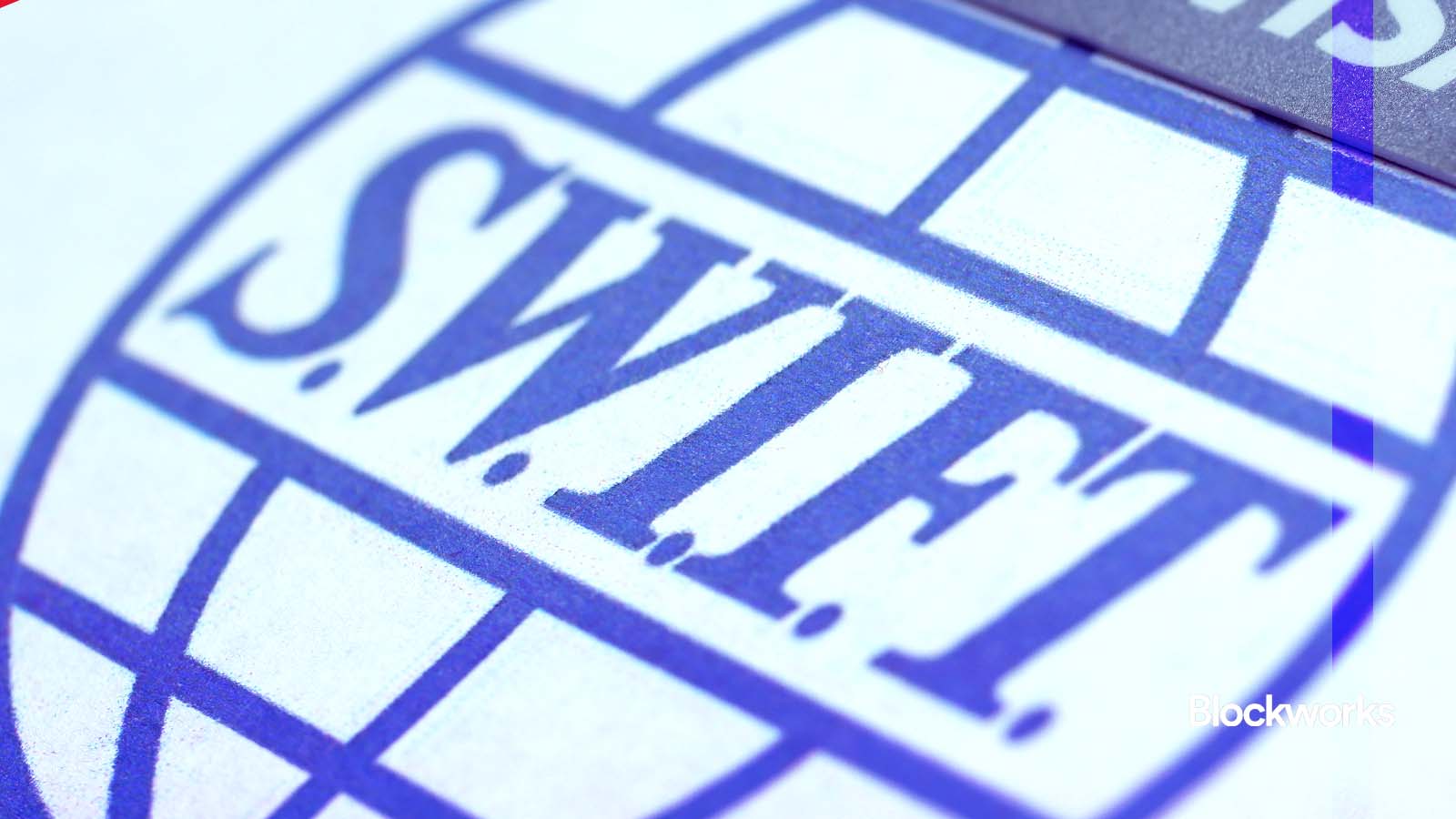Swift to add blockchain ledger to global payments network
The payments giant will integrate a blockchain-based ledger to streamline settlement across 200 countries

VenebergPV/Shutterstock modified by Blockworks
Swift has announced that it will incorporate a blockchain-based ledger into its core financial messaging infrastructure, aiming to accelerate settlement and expand digital finance capabilities across more than 200 countries.
In announcing the blockchain ledger at its flagship Sibos conference in Frankfurt, Swift said the initiative has the backing of more than 30 financial institutions spanning 16 countries. The first phase will involve building a conceptual prototype with Ethereum software developer Consensys, focused on real-time, 24/7 cross-border payments.
The network, which connects over 11,500 institutions worldwide, has long served as the backbone of international payments. The organization has previously run proofs of concept with tokenization and cross-chain interoperability, but this new initiative represents an early-stage integration of blockchain technology into its infrastructure, beginning with a prototype.
This new project is designed to facilitate multiple forms of tokenized value, but Swift emphasized that defining specific token types — such as deposits, central bank digital currencies (CBDCs), or securities — will remain the responsibility of commercial and central banks. Its role is to provide the infrastructure to move regulated value securely and at scale.
Participating banks, including Bank of America, Citi, HSBC, Deutsche Bank, and BNP Paribas, framed the effort as a step toward industry-wide modernization. Swift positioned the initiative as part of its broader two-track strategy: upgrading existing fiat-based payment rails while simultaneously preparing infrastructure for a digital asset environment.
Swift has not disclosed the timeline for future phases of the ledger project. The organization said it will complete the prototype first, then work with its global community to determine pilot testing in select corridors and possible future rollout.
This is a developing story.
This article was generated with the assistance of AI and reviewed by editor Jeffrey Albus before publication.
Get the news in your inbox. Explore Blockworks newsletters:
- The Breakdown: Decoding crypto and the markets. Daily.
- 0xResearch: Alpha in your inbox. Think like an analyst.






